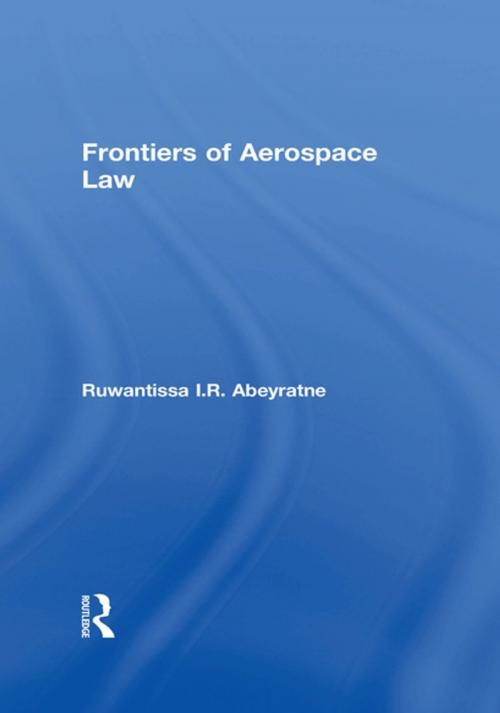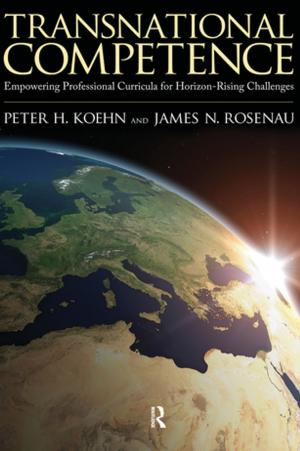| Author: | Ruwantissa I.R. Abeyratne | ISBN: | 9781351935296 |
| Publisher: | Taylor and Francis | Publication: | May 15, 2017 |
| Imprint: | Routledge | Language: | English |
| Author: | Ruwantissa I.R. Abeyratne |
| ISBN: | 9781351935296 |
| Publisher: | Taylor and Francis |
| Publication: | May 15, 2017 |
| Imprint: | Routledge |
| Language: | English |
Aerospace law is seeing a gradual merger between the two previously isolated regimes of human conduct pertaining separately to air and to space law. The use of information technology is arguably the foremost compelling force responsible for the unity of the aviation and space activities of man. It is therefore inevitable that information technology, computer law and the laws pertaining to State and individual responsibility are inextricably intertwined in a net of legal issues which would emerge in this new millennium. Frontiers of Aerospace Law introduces such issues as challenges to be addressed, both as corollaries and concomitants to this fundamental and overriding trend in the merger between air and space law. The issues range in space from legal liabilities pertaining to extra-terrestrial intelligence; environmental pollution in outer space; conduct of persons in outer space; to cyber crimes affecting outer space activities; and in air law, issues such as aircraft noise; economic trends of airports and air navigation services; funding for aviation safety projects; and emergent aero-medical issues and privacy of airline pilots. Its recommendations are geared to look future reality directly in the face and find legal solutions. In the realm of public international law, remedial measures are almost non-existent in the field of aerospace law, except for a solid foundation given to the Council of the International Civil Aviation Organization to hear disputes between States on matters relating to civil aviation, a facility which has so far scarcely been used in the Organization’s 55 year old history. Apart from a few provisions in the various space law conventions, there is no single coherent settlement mechanism at space law. The increasingly rapid proliferation of space activities in the coming years and their diversity leave no room for doubt that new laws will have to be put into place and new mechanisms to combat problems will have to be carefully thoug
Aerospace law is seeing a gradual merger between the two previously isolated regimes of human conduct pertaining separately to air and to space law. The use of information technology is arguably the foremost compelling force responsible for the unity of the aviation and space activities of man. It is therefore inevitable that information technology, computer law and the laws pertaining to State and individual responsibility are inextricably intertwined in a net of legal issues which would emerge in this new millennium. Frontiers of Aerospace Law introduces such issues as challenges to be addressed, both as corollaries and concomitants to this fundamental and overriding trend in the merger between air and space law. The issues range in space from legal liabilities pertaining to extra-terrestrial intelligence; environmental pollution in outer space; conduct of persons in outer space; to cyber crimes affecting outer space activities; and in air law, issues such as aircraft noise; economic trends of airports and air navigation services; funding for aviation safety projects; and emergent aero-medical issues and privacy of airline pilots. Its recommendations are geared to look future reality directly in the face and find legal solutions. In the realm of public international law, remedial measures are almost non-existent in the field of aerospace law, except for a solid foundation given to the Council of the International Civil Aviation Organization to hear disputes between States on matters relating to civil aviation, a facility which has so far scarcely been used in the Organization’s 55 year old history. Apart from a few provisions in the various space law conventions, there is no single coherent settlement mechanism at space law. The increasingly rapid proliferation of space activities in the coming years and their diversity leave no room for doubt that new laws will have to be put into place and new mechanisms to combat problems will have to be carefully thoug















